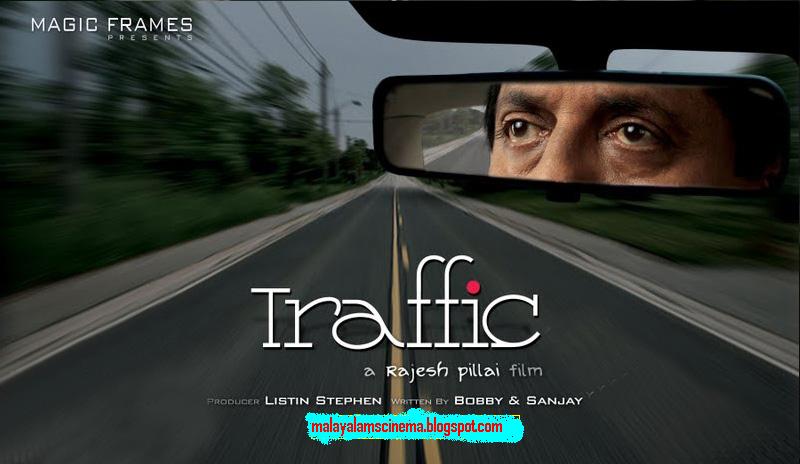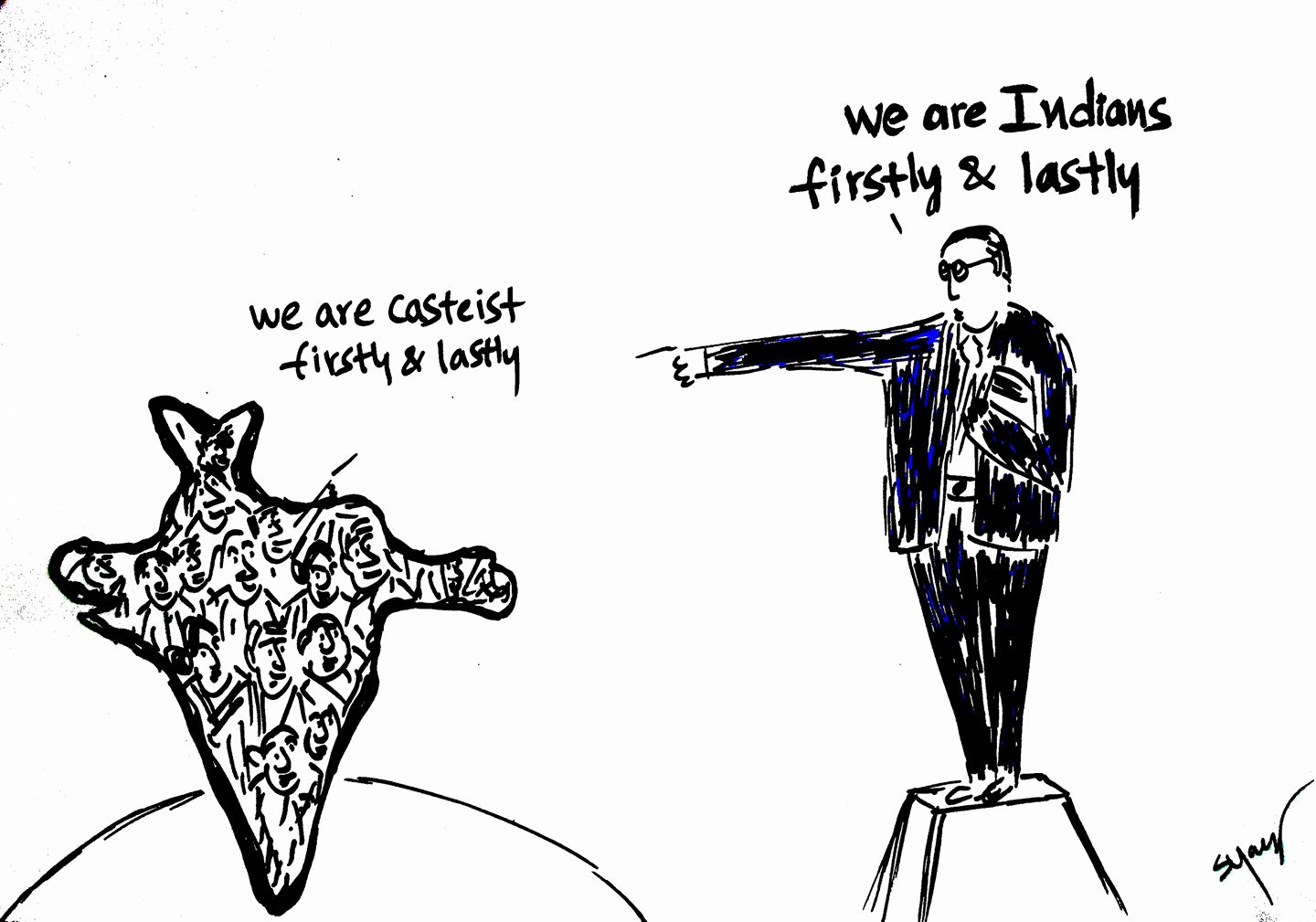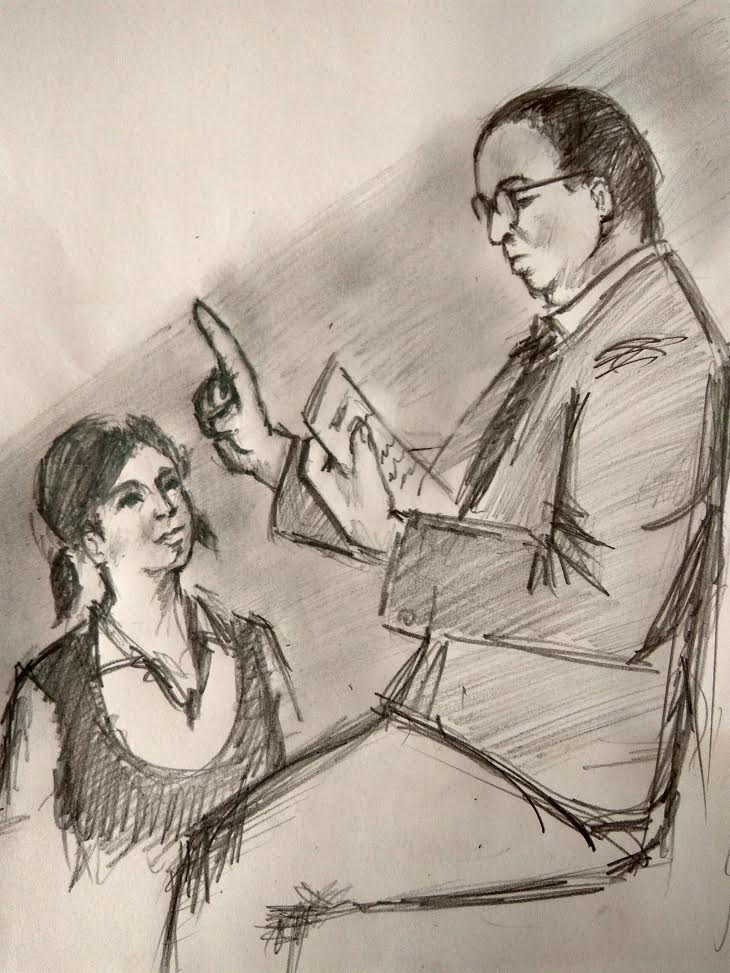Rupesh Kumar
The Malayalam movie ‘Traffic’ has the actor Sreenivasan essaying complex roles; narrator, convict and the hero. I find it significant to analyze his role transformations and examine the explicit and implicit messages being conveyed in the movie as a reflection of Malayali society.
The Narrator Why was Sreenivasan chosen to be the ‘philosophical’ narrator in ‘Traffic’? Perhaps, as a part of the ongoing image building exercise of the Brahmanical hegemony in Malayalam cinema and cultural spectrum to construct him into a reference point as ‘the’ satirical intellectual. How does he get this image? When we closely look at the characters/scripting/directorial efforts of Sreenivasan, through his thirty year long film career, there is a clear and consistent brahmanical narrative that disparages the body, mind and culture of dalit bahujan. His characters animating the black/dalit body languages were either failures, fools or cowards. His scripts were usually aimed at ‘killing’ dalit bahujans on screen. In popular culture he is celebrated as Kerala’s ‘Charlie Chaplin’ and a media savvy intellectual. One who can simultaneously critique and promote Malayalam cinema and its fraternity by playing to the gallery via numerous interviews, reviews, criticisms and television programs. 
However, in his creative endeavors he seems to perpetually avoid the dalit discourses/questions and steadily stands for the status quo, and for that, Kerala society receives him as an acceptable figure to define things. It is through this image formation which is in perfect sync with the Brahmin grammar we see Sreenivasan being raised to be a “philosophical announcer” in the movie Traffic. Earlier he was the introducer in “Udayananu tharam”, another movie that was directly racist against the dalit bahujan body languages of Kerala.
The convict
Sreenivasan’s role as Sudevan Nair, a constable convicted for bribery is rather interesting. The case against him is withdrawn by a single phone call from a Communist leader. What transpired in the call? The communist leader says, “he is a nair,…he has four or five daughters”! And through the tags of ‘nair” and “girl children” the cinematic text itself digests Sudevan Nair’s problem and excuses him of his criminality, though it is presented as satire. One is left to absorb open-mouthed, the sanctity of caste, gender and family being neatly leveraged in the system when the caste denomination is Nair. He gets pardoned without any legal formalities and his release recapitulates bygone feudal reigns where the lords decided on the spot; the crime, the punishment or the pardon. He is released not to just go on existing as a Nair and father of girl children but in fact to perform a heroic and dangerous road chase of 150 Kilometers to save the life of the superstar’s (Sidharth) daughter. Does the Indian constitution and Indian penal code have a place in this contemporary movie? Well, what are those? We are talking high cinema and sharp intellect here! And sadly, a true reflection of a casteist society.
This cinematic grammar is the outcome of the general notion in Kerala society that brahmanical political parties are here to decide legalities for the public. Neither the audience, reviewers nor critics question this scene. The presence of the Constitution and Penal code seem not to matter and solving the ‘nair/girl children’ problems of the bribe taking constable, Sudevan Nair, appears like a natural state of affairs and ‘Traffic’ is enthusiastically celebrated as the ‘happening of 2011’ in Malayalam cinema.
The Hero
Like most Malayalam films with political subtexts designed in the Brahmanic conscience which routinely places Christians/Muslims as ‘others’, the movie Traffic does it with a dramatic flair: the 'others' are etched out against the 'heroic' act of Hindu men racing to save a young woman's life!The two important hindrances faced by Sudevan Nair and Rajeev Menon (Assif Ali) in their chase are a Christian character, Dr. Abel (Kunchako Boban) and a Muslim obstacle in the form of a 'dangerous ghetto' named Bilal colony. The question, thrill and suspense of what transpired in the vehicle during the chase are explained as: Dr. Abel having done some wrong becomes a villain for a while and then dismissed. There is little suspense as to what is being represented here: the upper caste characters have always been given the power to question, dismiss, criminalize, reveal or excuse at will, minority or dalit bahujan characters. This is not a new depiction in Traffic; it is probably as old as Malayalam cinema itself.
The Others: Dr Abel, Reihan , Swetha and Adhithi
As per the Brahminized reading and defining the lives of 'others' as invariably being 'improper', unlike Sudaven Nair or Rajeev Menon's lives, we have Dr. Abel in shock because of the adultery committed by his wife, Shwetha (Remya Nambeesan). The man she is in a relationship with is Dr Abel's friend, Kichu. Dr. Abel, thus wants to kill his wife by staging an accident. Adulterous wife, murderous husband! By the patriarchal Hindu formation of Malayalam cinematic texts -woman (Christian woman) is the convicted figure of ‘adultery’ and is again punished here for her ‘sin’ as in other ‘male’ Malayalam movies like “Cocktail”.Attempts to break free of established family morality or suppressed sexuality by a woman is punished by cinema. At the same time it excuses away Kichu, the male participant in the adultery. This is in accordance with established Kerala tradition of ‘excused' sexual moralities for the man, while denying it for the woman. These complexities of Dr. Abel’s life, makes him interrupt the course of the virtuous chase. The fanatic Brahmanical message is clear: the journey with a minority is dangerous.

This message is further enhanced by the government actors, the commissioner, Ajmal Nasar (Anoop Menon), again and again warns Sudevan Nair and Rajeev Menon to be careful about Dr. Abel. A quick plan is rapidly executed to lay a trap for Dr. Abel. It is a savarna Hindu chase supported by the brahmanical system which is tunneled and blocks all attempts for liberation by individuals whom the mainstream considers as unworthy.
Reihan (Vineeth Sreenivasan), a member of the Muslim community is killed. Only two or three things which reveal the Islamism of this family are shown: Reihan’s name, his father being called as “bappachi” and a towel on his father’s head during Reihan’s funeral. The art director and costume designers in the movie cunningly avoid Muslim identities in their dress codes and home atmospheres. By avoiding this symbolism, Reihan’s family minus any symbols or reminders of their religion is tied to the frame of sympathy and love from the cinematic text and the audience.
Reihan’s lover Adhithi (Sandhya), begins her scene with the line “it’s over” after her divorce from her husband. She tries to break free of the stereotype of a typical family woman in the Kerala experience, and is willing to have an inter-religious love and marriage with Reihan. This possibility is eliminated by the film text that executes the ‘killing’ of Reihan.
Killing inter-caste and inter-religious relations is now the established tool in Indian movies to retain the purity of castes in the cultural texts and general psyche, there is no subliminal messages being given here, only a direct endorsement of dishonor killings. Here, I recall Dr. Ambedkar’s words “. ..inter-marriage are repugnant to the beliefs and dogmas which the Hindus regard as sacred. Caste is not a physical object like a wall of bricks or a line of barbed wire which prevents the Hindus from commingling and which has, therefore, to be pulled down. Caste is a notion, it is a state of the mind. The destruction of Caste does not therefore mean the destruction of a physical barrier. It means a notional change.” His emphasis on “The real remedy for breaking Caste is inter-marriage. Nothing else will serve as the solvent of Caste.” meets the unrelenting resistance to the very idea of dissolution of castes, captured so well in films as in real life. The caste Hindu political psyche of the movie Traffic disallows the possibility of a union between Reihan and Adhithi.
Post Reihan’s death, the movie doesn’t even hint about what happened to Adthithi, she is totally ignored. Ignoring ‘others’ is another brahmanical psychological tool.
Swetha, Dr. Abel’s wife, who crossed the sanctity of marriage was punished by Dr. Abel himself when he hits her with his car. He embodies the male mallu psyche that says if a woman commits ‘adultery’ she should be punished. Adhithi and Swetha are symbolic of breaking acceptable norms of sexuality of Kerala society, and they are punished for this by the text of the movie. The third significant woman, superstar Sidharth’s (Rehman) wife (Lena), even though she reacts against the male dominance/foolishness/irresponsibility/arrogance/ego of her husband she ends up as the good family woman. Despite her reactions and angry protests at dying within the patriarchal family structure of Kerala, she gets back her daughter and family life. The film doesn’t rupture the culture of pseudo moral, pseudo family establishment of Kerala.
Bilal colony (a dalit muslim colony) is another obstacle during the course of the chase. Commissioner Ajmal Nazar warns the team that this colony is where ‘minority’ live and if the chasers can cover this colony safely, the mission will be a success. He says it was a place known to have some riots and shooting. Here, Ajmal Nazar becomes the loudspeaker of the Brahmanical government hatred of colonies in India, especially dalit or dalit Muslim colonies. And this film takes it to a different level by scripting this hate inducing dialogue mouthed by a officer from the minority community itself. The speeding chase not only demonstrating the dangers of passing through ‘other spaces’ it is also a cinematic arrow or bulleted snapshots to propagate islamophobia. Through these representation, these films kill the history of political formations from different colonies in Kerala.
Traffic is ultimately the victory of savarna male politics, themed around saving the life of a superstar’s (Sidharth) daughter, with a heart transplant. To enable this, the Savarna governmental missionaries recruit members of the minorities to voice brahmanical agendas and thereby reinforcing images of their lives and spaces as being ghettoized, criminal and dysfunctional at all levels. It is an established fact that fans associations in which majority of members come from dalit and minority colonies are converted by the superstars to work for them, instead of liberating their own political identities. The superstars with the support of savarna governmental powers and the fan mobs behind them create a fanatic society, especially in Kerala and Tamil Nadu. This type of a fanatical political formation is elaborated by the cinematic language of Traffic. Yes, saving a girl’s life is a good thing to do, but there are a lot of girls, striving in their colonies and they can’t aspire to look towards political groups to problematize the issues of their colonies, for they are always blocked by the fans association under the leader ie., their superstar. The governmental missionaries wholeheartedly worked for Sidharth, the superstar, including the Police, Member of Parliament and so on, and Traffic is the screen testament for this nexus between the culture industry and the savarna society of Kerala.
The movie, Traffic, jams liberal aspirations and welds Malayali society more firmly into the casteist-patriarchical framework. Whenever this is disturbed by individuals there are violent ends or social dismissals. At the same time, men and women who uphold status quo notions of caste, gender, sexuality, family etc are handsomely rewarded with ever increasing caste privileges. If we say yes to this film, nothing will happen, but if we debate….
~~~
Rupesh Kumar is an award winning documentary film maker, read his previous writings on popular culture here










